issue contents
December 2016 issue

Cover illustration: 1,4-Bis{5-[bis(propan-2-yloxy)phosphoryl]thiophen-2-yl}-2,5-dipropoxybenzene was prepared by the nickel-catalyzed reaction of bis(5-bromothienyl)dipropoxybenzene and triisopropyl phosphite. Four hydrogen bonds connect the molecules, which are arranged in ribbons parallel to the bc plane. See: Detert & Schollmeyer [IUCrData (2016). 1, x161963].
metal-organic compounds
Download citation


Download citation


Open  access
access
 access
accessThis study concerns a redetermination of the structure of the polymeric lead(II) thiourea complex: [Pb(C2H3O2)2{SC(NH2)2}]n with diffractometer instead of photographic data and at the lower temperature of 100 K.
CCDC reference: 1519430
Download citation


Download citation


Open  access
access
 access
accessThe title compound consists of two phospharhodacyclic substructures sharing one Rh atom, which are formed by coordination/ortho-metallation of a triaryl phosphite, and by the coordination of a rigid bisphosphite, respectively.
CCDC reference: 1520284
Download citation


Download citation


Open  access
access
 access
accessThe angular pyridyl-based ligand 3,5-bis(pyridin-4-ylethynyl)pyridine was employed to react with HgCl2 and lead to the formation of a zigzag polymer chain structure.
CCDC reference: 1520979
Download citation


Download citation


Open  access
access
 access
accessIn a neutral IrIII complex with 1,2-diphenyl-1Hbenzimidazole and 2-benzoyl-1-phenylethenolate ligands, the coordination sphere of the IrIII atom is that of a slighlty distorted C2N2O2 octahedron, with the N atoms in a trans configuration.
CCDC reference: 1517541
Download citation


Download citation


Open  access
access
 access
accessThe title compound is composed of an aluminium centre coordinated by three bidentate thiopyridazine ligands in an octahedral environment.
CCDC reference: 1522435
Download citation


Download citation


Open  access
access
 access
accessThe manganese(II) salt of p-arsanilic acid features a centrosymmetric [Mn(H2O)6]2+ cation species and inversion-related hydrogen (4-aminophenyl)arsonilate cations which, together with four water molecules of solvation, generate a three-dimensional structure through extensive O—H⋯O, O—H⋯N and N—H⋯O hydrogen bonding.
CCDC reference: 1522310
organic compounds
Download citation


Download citation


Open  access
access
 access
accessIn the title compound, the oxazoline ring displays a twisted conformation on the –CH2–CH2– bond and its mean plane makes a dihedral angle of 57.4 (1)° with the benzimidazole ring mean plane. In the crystal, molecules are linked by N—H⋯O and N—H⋯N hydrogen bonds, forming chains propagating along the a-axis direction.
CCDC reference: 1519450
Download citation


Download citation


Open  access
access
 access
accessIn the title compound, the dihedral angle between the aromatic rings is 8.64 (10)°. The crystal structure features inversion-related dimers linked by pairs of N—H⋯N hydrogen bonds, generating  (8) loops. A further N—H⋯N hydrogen bond links the dimers into (100) sheets.
(8) loops. A further N—H⋯N hydrogen bond links the dimers into (100) sheets.
CCDC reference: 1520838
Download citation


Download citation


Open  access
access
 access
accessA new monoclinic form of 4-nitrophenylacetic acid differs from the known orthorhombic form both in is molecular conformation and in its intermolecular contacts. The plane of the carboxylic acid group is more nearly perpendicular to the plane of the aromatic ring than in the previous form. Both polymorphs display hydrogen-bonded  (8) carboxylic acid dimeric pairs, but here neighbouring dimers interact through nitro–nitro N⋯O dipole–dipole contacts rather than the nitro–carbonyl contacts found in the orthorhombic form.
(8) carboxylic acid dimeric pairs, but here neighbouring dimers interact through nitro–nitro N⋯O dipole–dipole contacts rather than the nitro–carbonyl contacts found in the orthorhombic form.
CCDC reference: 1520553
Download citation


Download citation


Open  access
access
 access
accessThe structure of the title molecule is reported. N—H⋯N and C—H⋯O together with C—H⋯π(ring) and π–π stacking interactions stabilize the crystal structure.
CCDC reference: 1519973
Download citation


Download citation


Open  access
access
 access
accessThe title molecular compound crystallized in the space group P21. The 3,4-dihydro-2H-pyran-4-one moiety makes a dihedral angle of 42.76 (10)° with the phenyl group. The crystal structure is stabilized by C—H⋯O interactions, forming a three-dimensional network enclosing an  (6) ring motif along the c axis. A short intramolecular O⋯O contact is found giving rise to an S(5) motif.
(6) ring motif along the c axis. A short intramolecular O⋯O contact is found giving rise to an S(5) motif.
CCDC reference: 1520376
Download citation


Download citation


Open  access
access
 access
accessThe title compound was prepared by methylation of the selenadiazole with methyl iodide. In the crystal, three independent selenadiazolium ions are arranged in layers connected via I3−·(I−)2 anion layers.
CCDC reference: 815309
Download citation


Download citation


Open  access
access
 access
accessIn the title compound, the prop-2-yn-1-yl group is inclined to the benzene ring by 69 (7)°. In the crystal, molecules are linked by a pair of C—H⋯O hydrogen bonds, forming inversion dimers with an  (12) ring motif.
(12) ring motif.
CCDC reference: 1014207
Download citation


Download citation


Open  access
access
 access
accessIn the title compound, the triazepine ring displays a boat conformation and its mean plane is inclined to the triazole ring by 22.10 (9)°. In the crystal, molecules are linked by C—H⋯O hydrogen bonds, forming chains parallel to [010].
CCDC reference: 1519451
Download citation


Download citation


Open  access
access
 access
accessThe complete molecule of the title compound is generated by crystallographic twofold symmetry, with the Si atom lying on the rotation axis. The molecule adopts a V-shape. In the crystal, weak C—H⋯O hydrogen bonds link the molecules into [101] chains.
CCDC reference: 1519189
Download citation


Download citation


Open  access
access
 access
accessIn the title compound, the arene rings are inclined at an angle of 65.97 (6)°. In the crystal, molecules are linked by C—H⋯π interactions, forming chains propagating along the b-axis direction.
CCDC reference: 1485304
Download citation


Download citation


Open  access
access
 access
accessThe title compound crystallizes in the triclinic space group P-1. The previously reported polymorph occurs in the monoclinic space group P21/c and has two independent molecules in the asymmetric unit [Wang (2010). Acta Cryst. E66, o2822].
CCDC reference: 1520574
Download citation


Download citation


Open  access
access
 access
accessThe asymmetric unit of the title compound consists of two independent molecules (A and B) differing in the conformation of the thiazole ring; twisted for molecule A and planar for molecule B. In the crystal, the two molecules are linked by a C—H⋯N hydrogen bond.
CCDC reference: 1520873
Download citation


Download citation


Open  access
access
 access
accessIn the crystal of the organic salt C5H6BrN2+·C8H7O3−, the cations and the anions are linked via N—H⋯O and C—H⋯O hydrogen bonds, forming a helical chain.
CCDC reference: 1520598
Download citation


Download citation


Open  access
access
 access
accessIn the title chalcone derivative, the dihedral angle between the benzene rings is 3.97 (8)°. In the crystal, molecules are linked by weak C—H⋯O hydrogen bonds, forming C(9) chains propagating along the [010] direction.
CCDC reference: 1520740
Download citation


Download citation


Open  access
access
 access
accessThe large side chain is nearly perpendicular to the mean plane of the triazolopyrimidine ring system. The only significant intermolecular interaction in the crystal is a C—H⋯O hydrogen bond.
CCDC reference: 1520747
Download citation


Download citation


Open  access
access
 access
accessThe packing of the title molecule is directed by C—H⋯O, C—H⋯π(ring) and offset π–π stacking interactions. These generate small channels running parallel to the a axis with approximate cross-sections of 3.7 × 8.1 Å.
CCDC reference: 1521358
Download citation


Download citation


Open  access
access
 access
accessThe crystal structure of this triazolopyrimidine derivative features C—H⋯N hydrogen bonds, Br⋯N halogen bonds, π–π stacking interactions and Br⋯π contacts, which combine to stack the molecules along the a-axis direction.
CCDC reference: 1520692
Download citation


Download citation


Open  access
access
 access
accessThe molecular and crystal structure of a chlorothiophene derivative is reported. In the crystal, the molecules are linked by weak hydrogen bonds, forming chains propagating along the c axis.
CCDC reference: 1522076
Download citation


Download citation


Open  access
access
 access
accessIn the title compound, the pyrazole ring makes dihedral angles of 39.74 (8) and 60.35 (8)° with the phenyl and toluene rings, respectively. In the crystal, molecules are linked by C—H⋯π interactions, forming chains propagating along [100].
CCDC reference: 1521904
Download citation


Download citation


Open  access
access
 access
accessThe title compound was prepared by the nickel-catalyzed reaction of bis(5-bromothienyl)dipropoxybenzene and triisopropyl phosphite. Four hydrogen bonds connect the molecules, which are arranged in ribbons parallel to the bc plane.
CCDC reference: 1521457
Download citation


Download citation


Open  access
access
 access
accessThe complete molecule of the title compound, C28H24N6S4, is generated by crystallographic inversion symmetry. In the crystal, molecules are linked by C—H⋯π and π–π interactions.
CCDC reference: 1521950
Download citation


Download citation


Open  access
access
 access
accessIn the title compound, the piperidine ring adopts a slightly distorted chair conformation. In the crystal, molecules are linked via O—H⋯N hydrogen bonds, forming C(7) chains along the c axis.
CCDC reference: 1522251
Download citation


Download citation


Open  access
access
 access
accessIn the title compound, the cyclohexane ring adopts a chair conformation. The crystal structure features C—H⋯S hydrogen bonds.
CCDC reference: 1521677
Download citation


Download citation


Open  access
access
 access
accessIn the title molecule, the seven-membered ring adopts a boat conformation. Pairwise C—H⋯π(ring) interactions form centrosymmetric dimers which pack in zigzag layers associated through weak C—H⋯O hydrogen bonds.
CCDC reference: 1522632
Download citation


Download citation


Open  access
access
 access
accessIn the title compound, the triazole ring is inclined to the chromene ring system by 78.3 (2)°. In the crystal, molecules are linked by C—H⋯N hydrogen bonds into helical supramolecular chains along the b axis.
CCDC reference: 1523344
Download citation


Download citation


Open  access
access
 access
accessThe cation and anion are linked by an N—H⋯Cl hydrogen bonded, while weak C—H⋯N, C—H⋯O and C—H⋯Cl interactions are present in the extended structure.
CCDC reference: 1521971
Download citation


Download citation


Open  access
access
 access
accessIn the title enaminone, the dihedral angle between the aromatic rings is 86.34 (9)° and an intramolecular N—H⋯O hydrogen bond closes an S(6) ring. In the crystal, C—H⋯O hydrogen bonds link the molecules into (010) double sheets.
CCDC reference: 1522913
Download citation


Download citation


Open  access
access
 access
accessThe structure of the levulinic acid derivative (Z)-3-(4-methylbenzylidene)-4-oxopentanoic acid is reported. The crystal structure is stabilized by intermolecular hydrogen bonds.
CCDC reference: 1523139
Download citation


Download citation


Open  access
access
 access
accessThe title imidazo[4,5-b]pyridine derivative crystallizes with two independent molecules in the asymmetric unit. They differ primarily in the conformations of the ester substituents. In the crystal, molecules are linked via C—H⋯N and C—H⋯O hydrogen bonds, forming sheets parallel to the ab plane.
CCDC reference: 1523022
Download citation


Download citation


Open  access
access
 access
accessIn the title crystal, chains extending in the b-axis direction are formed by intermolecular C—H⋯O hydrogen bonds. The chains are arranged into layers by π–π stacking interactions between the substituted pyridine rings.
CCDC reference: 1521533
Download citation


Download citation


Open  access
access
 access
accessIn the title compound, the methyl-substituted benzene ring is twisted relative to the 4H-chromenon skeleton by 51.5 (2)°. The C atom of the methoxy group of the 4H-chromenon unit is displaced from the ring plane by 1.225 (2) Å. In the crystal, C—H—O interactions connect the molecules into (001) sheets.
CCDC reference: 1523530
Download citation


Download citation


Open  access
access
 access
accessThe molecular and crystal structure of a fluorene amine derivative is reported. The crystal structure is stabilized by C–H⋯π(ring) contacts.
CCDC reference: 1523351


 journal menu
journal menu












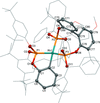

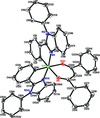
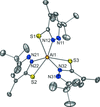





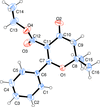


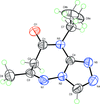
























![[publCIF]](/logos/authorchecklist11.gif)





